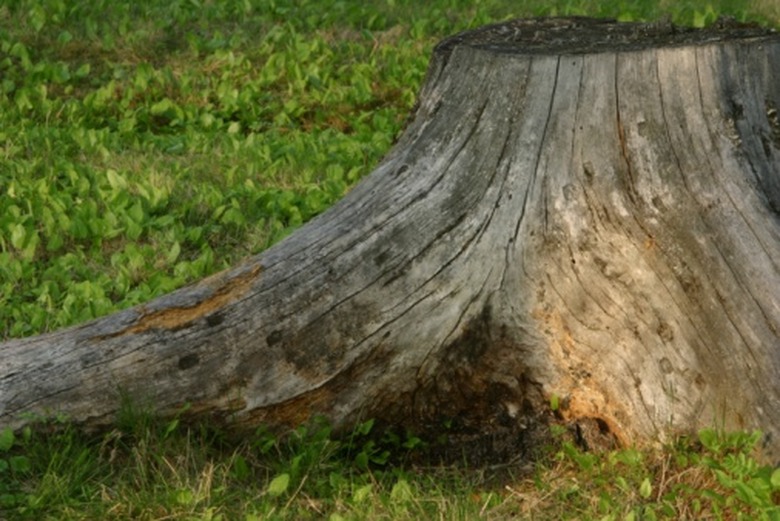How To Make A Fake Tree Stump
Things Needed
- Chicken wire
- Metal snips
- Wooden stool
- Pliers
- Staple gun
- Plaster bandages
- Scissors
- Bucket of water
- Acrylic paint
- Brushes
- Urethane (optional)
Tip
Looking at actual tree stumps can help you create a natural shape when molding the chicken wire. Place some dirt, wood chips or other items from your garden around the base of the stump to hide the bottom edge. Decorate your stump with artificial moss, plastic mushrooms or a wooden squirrel statue.
Warning
Take heed not to cut yourself hen snipping the chicken wire. Wear safety gloves when possible.
Fake tree stumps can be purely decorative, such as those found in gardens, or used for practical purposes in a stage play, haunted house or other production. With the addition of chicken wire and plaster bandages, a stump can be quickly formed around the stool and painted to match whatever species of wood that you desire.
Step 1
Cut two dozen 2-foot by 2-foot squares of chicken wire using metal snips.
Step 2
Wrap the chicken wire around a wooden stool, working from the seat to the ground, to form a stump shape. It should be wider at the bottom, tapering upward like a volcano or butte. Shape the base of the stump with rounded points to resemble the places where the roots would go into the ground.
Step 3
Twist the ends of each wire together with pliers to keep it secured around the stool. Then staple each wire to every leg of the stool using the staple gun.
Step 4
Cut several rolls of plaster bandages into 12-inch strips. Use the widest bandages that you can purchase.
Step 5
Dip the first bandage strip into a bucket of water. Squeeze out any excess water and place the strip onto the chicken wire located at the top of the stump.
Step 6
Cover the entire stump in strips of plaster bandage. Apply the bandages in a random criss-cross pattern for the strongest surface.
Step 7
Arrange the wet bandages covering the seat into a circular pattern to simulate the stump's growth rings.
Step 8
Allow the bandages to dry.
Step 9
Apply a second layer of bandages to the sides of the trunk. Slightly crush and rumple each bandage to simulate an irregular bark texture. Note the pattern and direction of the texture as you add each bandage so that they all appear to travel in the same direction.
Step 10
Allow the second layer of bandages to dry.
Step 11
Paint the entire stump with acrylic paint in a dark wood color and allow it to dry.
Step 12
Drybrush the stump with a lighter wood color. Wipe most of the paint off of the brush before drawing it across the bark texture. Paint only the highest parts of the bark, leaving darker shadows and crevices intact.
Step 13
Drybrush the lighter color onto the top of the stump, coloring only the tops of the swirls and allowing the darker rings to show.
Step 14
Allow all of the paint to dry. If the stump is to be kept outside, brush on a layer of protective polyurethane to prevent the plaster bandages from becoming soggy due to moisture.
